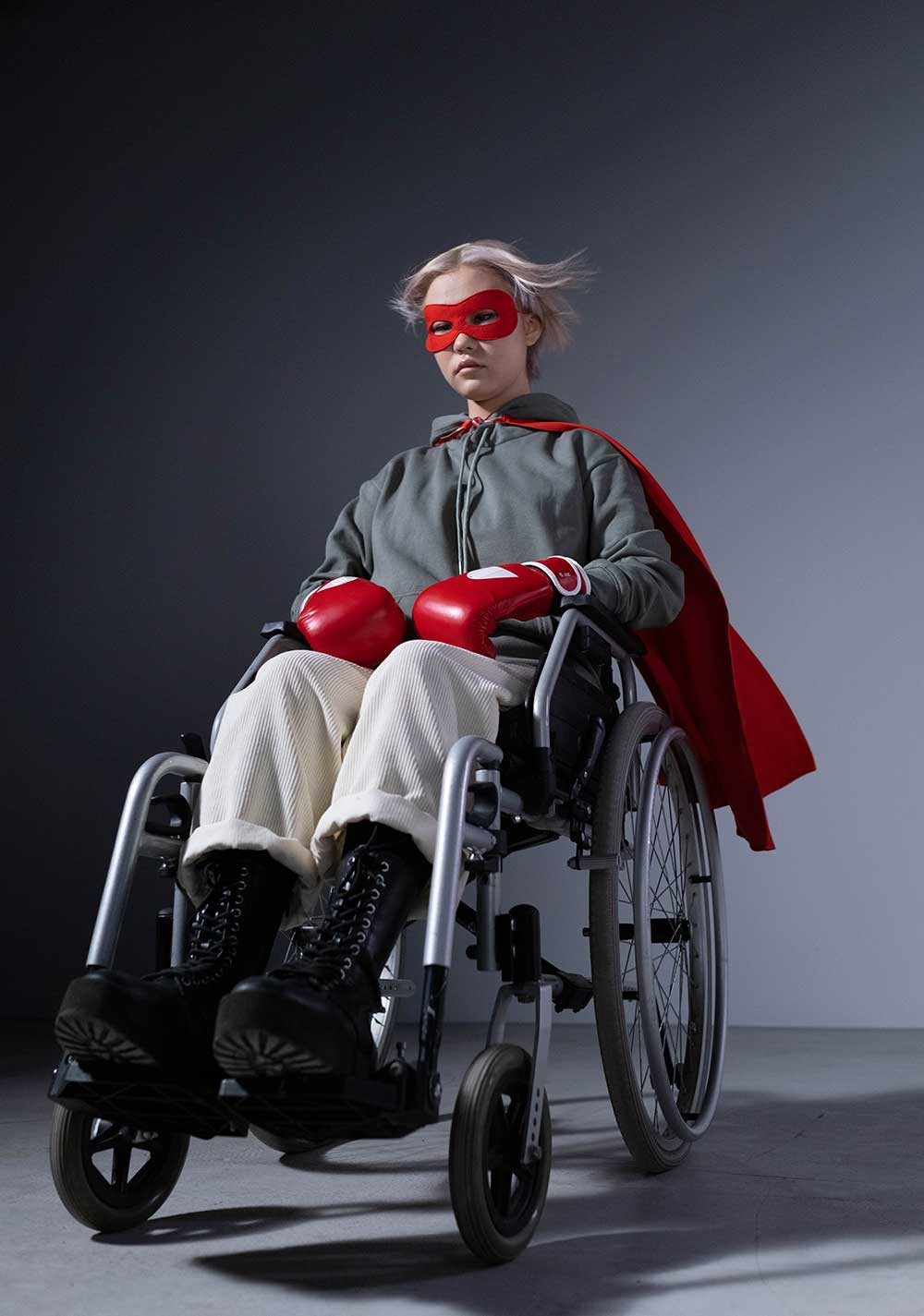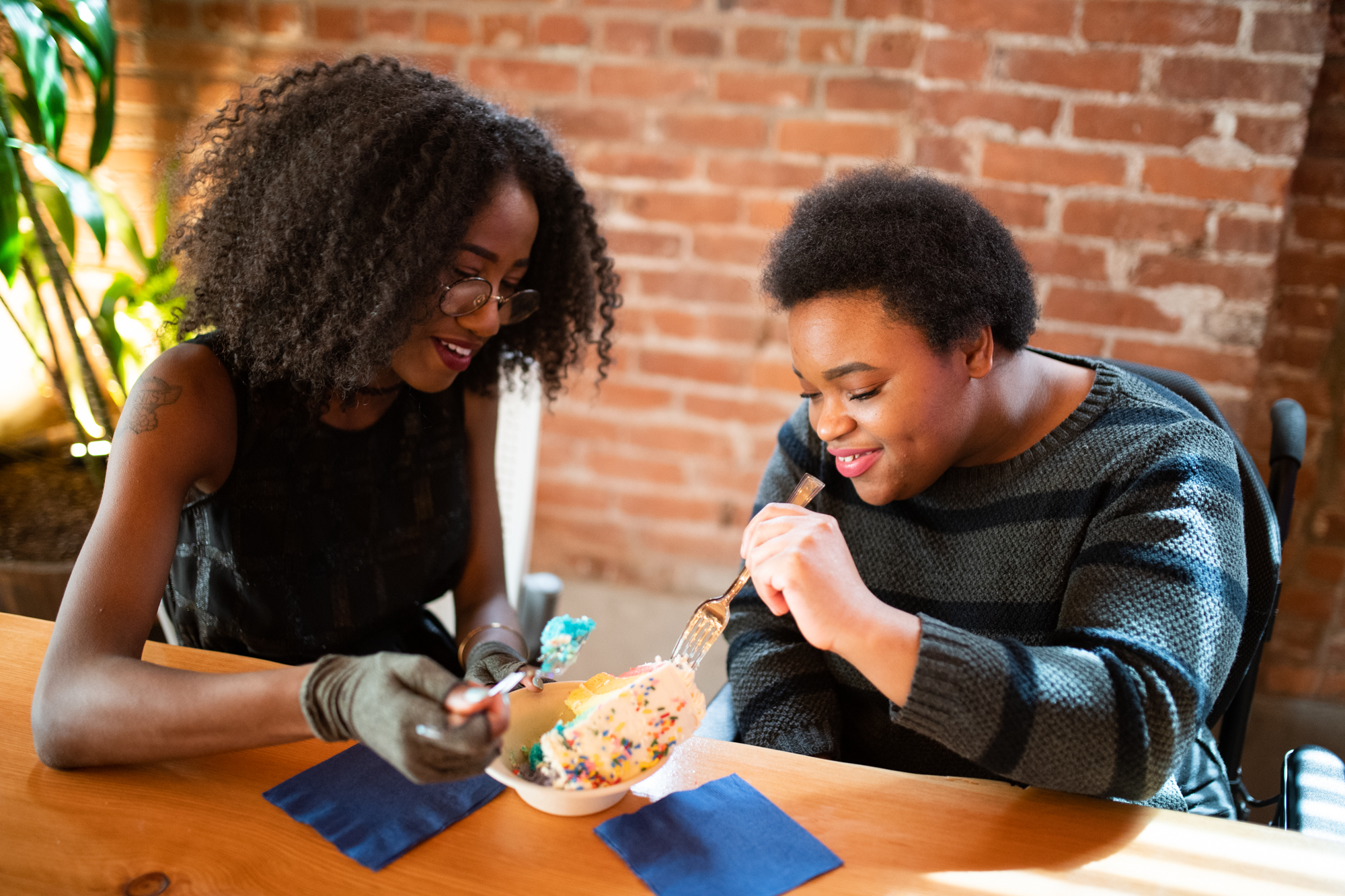
Representation of
DISABILITY
Disability in the Media
Stock Photography
Developing an Understanding
A quick search of ‘disability’ on the Pexels stock photography website opens in new window features a variety of over 3,000 images of disabled people. There are some images that feature people performing everyday activities such as playing sports, doing yoga, hanging out with friends, and working in an office. Others show people in a variety of staged poses highlighting their prosthetic limbs and mobility devices as props or wearing a superhero mask and cape and many images crop and eliminate the person altogether, showing close-up details of a wheelchair, the word ‘braille’ spelled out in flowers, or a disembodied prosthetic hand holding a stalk of broccoli. And overwhelmingly, the majority of images feature predominately white disabled people. It is important to remember that disability is a wide spectrum, and one image will not represent everyone. But stock images should not reinforce stereotype and should portray disabled people authentically.

Deepening your Understanding
Stocksy United opens in new window is a cooperative artist owned royalty-free stock photo + video agency based in Victoria, B.C. Everyday People: How to Better Represent Disabilities in the Media opens in new window suggests a few tropes and stereotypes to avoid when considering stock photography images to accompany media about disability and disabled people:
- Avoid framing disabled people solely as sources of inspiration. As Kayla Brown states: “Many disabled characters are fuelled by stereotypes of “overcoming” their disability or being inspirational to others. While there is nothing wrong with being an inspiration, it should not be the only purpose that they serve in the narrative.”
- Disability narratives are often presented as sad, tear-jerker stories and when they are the only stories being told, they reinforce a stereotype.
- The story doesn’t always focus on the disability so the images shouldn’t either. Imagery should showcase people, not just the mobility device.
- The people in the images should be actual disabled people, not people pretending to be disabled.
Disabled And Here opens in new window is a free disability-led stock photography and illustration image agency and interview series that celebrates disabled Black, Indigenous and People of Colour. “Media portrayals of disability tend to be homogenous and one-dimensional, focusing primarily on children & elderly folk who all happen to be white and framed either through the lens of pity or inspiration porn. Disabled And Here is a reclaiming of our depiction, starring disabled BIPOC with different diagnoses (or lack thereof), body sizes/types, sexual orientations, and gender identities. This is disability representation from our own community” (Disabled And Here, n.d.).
In the US, Verizon (Yahoo as of September 1,2021), Getty Images opens in new window and the National Disability Leadership Alliance (NDLA) opens in new window have collaborated on The Disability Collection opens in new window, a growing collection of stock images that break stereotypes and authentically portray people with disabilities in everyday life. This project challenges the stock photography industry to “get real about disability representation with stock photos that can be licensed and used by anyone in the world.” (Getty, 2021).
The collection, curated by disability leaders from a variety of disability organizations, includes images of disability and disabled people captured by professional photographers and asks disabled people to contribute by submitting their own images, with clear rules, guidelines, copyright information, and waivers (Getty, 2021).






